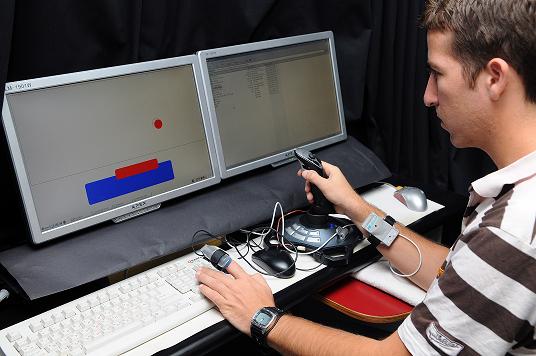Dr. Michael Wagner, head of the Human Factors Engineering Laboratory at the Ariel University Center, and A.S., a graduate student at the Technion and a reserve pilot, developed a tool to measure and display the pilot's stress state.

An essential tool for assessing the stress experienced by pilots during flight training is currently being developed and tested at the Ariel University Center in Samaria. Dr. Michael Wagner, head of the human factors engineering laboratory at the University Center, and A.S., a graduate student at the Technion and a reserve pilot, developed a tool to measure and display the pilot's stress state.
Like the drivers who hold a lot of power on the steering wheel in dangerous situations, pilots also react in a similar way. In simulator training, pilots are currently tested according to a single measure - the level of mission performance (quality of flying, navigation, and performance of various military missions). Through innovative development, it will also be possible to measure the mental effort and the degree of stress involved in the performance, as an additional and important measure.
A sensor system connected to the steering rod and the pilots' arms checks the strength of the pilots' grip on the steering rod, the actions of the hand muscles, and the degree of perspiration of the palms. A combined examination of a number of these physiological indicators makes it possible to know what state the pilot is in, whether he is stressed in performing the task, and whether in the case of a difficult exercise he reaches the peak of his ability, or is he able to perform even more complex exercises. The sensor data, after going through computational processing processes in real time, will reflect the degree of stress the pilot is under at different stages of the training, and will be regularly presented to the pilot's instructor.
Dr. Wagner: "When it comes to experienced pilots, the intention is not to examine whether or not to allow them to fly, but to allow them feedback on stressful situations, to give them tools to deal with difficult situations, and to reduce the degree of stress in these situations. It will also be possible to apply the tool in simulators designed for the training and sorting of young pilots. In the future, it is possible and possible to implement this tool in other simulators designed for training doctors, drivers, drone pilots, etc. The research and development, supported by the Ministry of Defense, are in advanced stages, and within a short period of time we will be able to assess the quality and level of accuracy of the system and the pressure indicators."

One response
It is known that drones do not come under pressure.
And some say that the future is in drones.